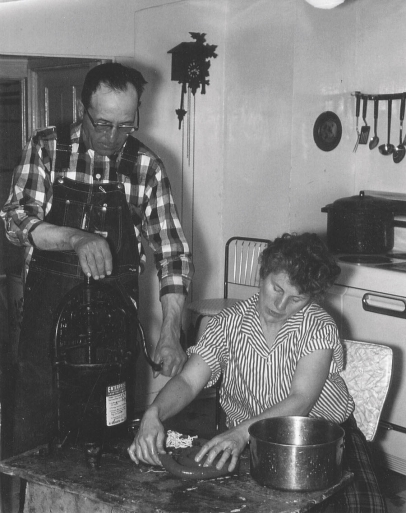A World of Influences
The end of the 19th century marked an era when thousands of people migrated to the American West seeking opportunity. Some hoped to strike it rich as miners and others sought to lay roots on their own land.
Migration to the Roaring Fork Valley was no exception. While miners could earn good pay, many men did not like working underground. And after the Silver Panic of 1893, many immigrant miners gravitated to their former occupations of ranching and farming. The percentage of foreign-born citizens in Pitkin County declined from a high of 29 percent in 1900 to 15 percent in 1940, according to county census records. The majority were from alpine areas of Europe such as Val d’Aosta in northern Italy and the Upper Carniola region of Slovenia. The similarity of the Roaring Fork Valley to these mountainous regions of Europe prepared immigrants well for Colorado’s high altitude and semi-arid conditions. As the ranchers and farmers felt more at home, they sent correspondence to friends or relatives still in the old country encouraging them to come over.
As with any group of immigrants, ways of life from the old country were replicated in the New World. Food was an especially important link to their former lives. Pitkin County’s Italian immigrants were known for making homemade sausage, cheese, and grappa—a kind of brandy made from fermented grapes. Slovenians were known for their sauerkraut, kranjska sausage (similar to kielbasa), potica sweetbread, and dandelion wine. In the book Aspen: The Quiet Years, Lillian Popish Dalton reminisced about how her mother, Jennie Vedic Popish, used to make fresh bread three times a week and would then fry the bread: “In the morning, she would take some of this bread for lunch and fry it in grease. It was so good. It was like a raised doughnut.” She also fondly recalled potica, “our favorite. It’s a raisin nut bread.”
During Colorado’s Prohibition, from 1916 to 1933, Aspen’s immigrant families ordered large quantities of grapes from California, filling train cars, to make their own wine and grappa.
“My folks made good wine. I think almost everybody from the old country did,” recalled Jennie Miklich Cowling, another child of Slovenian immigrants, in The Quiet Years. “I remember with my bare feet I used to stomp those damn grapes. My feet would turn purple.”
First-generation Aspenite Ed Gregorich talked about how his Slovenian mother—not his father—“used to make the whiskey. She would make it out of apricots and prunes. It was more like a brandy.”
While much of this knowledge has been lost over time, the resurgence of locally made foods and drinks are now seen as a specialty in the valley:
potato vodka, rye whiskey, and locally raised meats and vegetables. One can still find some of these Old World family recipes—such as Amelia Trentaz’s kranjska sausage, Eva Arbaney Gerbaz’s Italian sausage, and Celia Tekoucich Marolt’s dandelion salad in Aspen: The Quiet Years, by Kathleen Krieger Daily and Gaylord Guenin, and in Aspen Potpourri by Mary Eshbaugh Hayes.
Edible Traditions is produced by Aspen Historical Society. For access to the public archives, including historical images such as these, visit aspenhistory.org or call (970) 925-3721.





